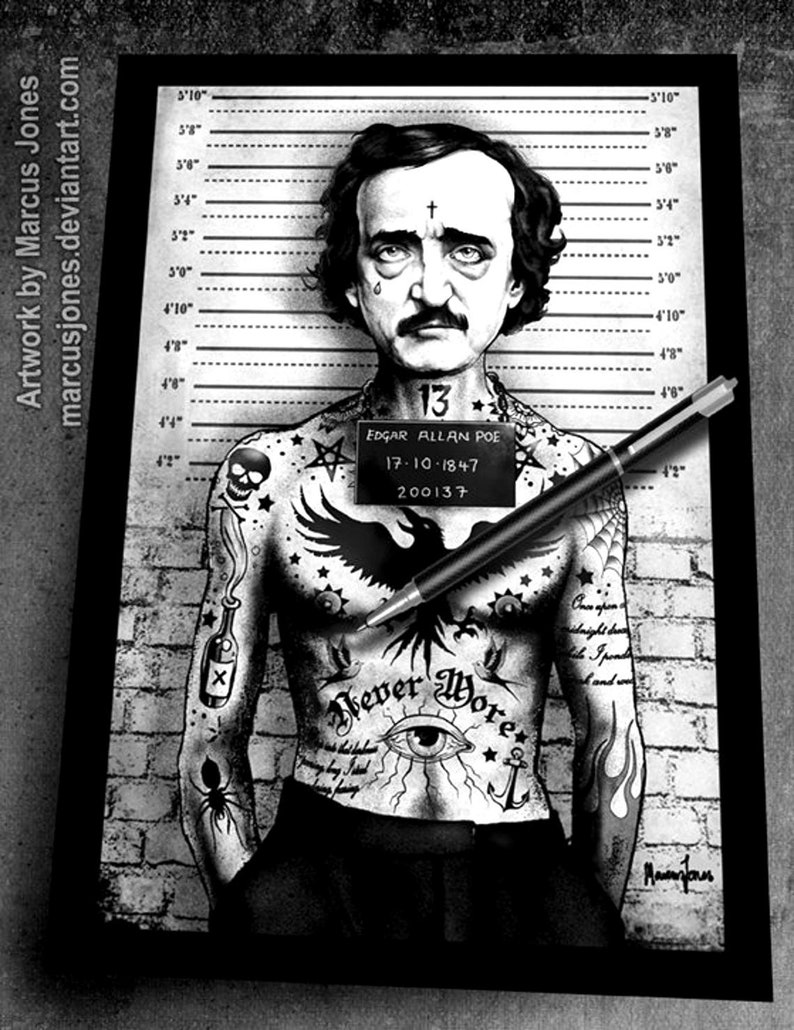
Just like your teacher expects you to do. I believe it's done, but I've forgotten stupid things before, and I can't find any option to save it as a draft. Now take the characteristics of gothic fiction listed here and apply the list to Poes story. Secondary note: If I find that I've forgotten something before the deadline, I'll come back and add it. Scene pictured is the narrator of the Raven flinging open his window to try and see what was knocking, accidentlaly letting in the raven. Dore also did illustrations for authors like Lord Byron, Milton, Tennyson, and Dante.
Gothic literature edgar allan poe series#
Dore used heavy shadows to capture the gloomy/depressed mood of the piece, as well as a lot of religious imagery (particularly angels) throughout the series to represent death and the souls of the dead. PICTURE 2: One of a series of steel-plate engravings made in tribute for 'The Raven' by artist Gustave Dore, released in 1884. PICTURE 1: Portrait shot of Edgar Allan Poe

My entry was 'New York, The New York Mirror Publishing House', about the publication of the Raven
Gothic literature edgar allan poe how to#
NOTE: can't find how to make this stupid thing display the map like everyone else's, so I'm leaving a link to the map here: Poe retains popularity today both in modern culture and in literature circles, and his work is still widely celebrated. His most famous works included: The Raven, The Cask of Amontillado, The Black Cat, The Tell-Tale Heart, and Annabelle Lee He would also go on to influence authors such as Charles Baudelaire and Fyodor Dostoyevsky. The French Symbolists were greatly influenced by his work, taking inspiration on how to better convey personal emotion in their works and continuing the trend of emphasis on the individual and their experiences/desires, rather than those of a deity. He was also an outspoken supporter of the "art for art's sake" movement and the mechanics of how writers improve their craft. Poe explored death and loss through his works as a sort of catharsis for the tragedy that occured throughout his life, refusing to shy away from difficult or disturbing subject matter. Renowned for his skill with dark and twisted subject matter and his handling of gloomy, forbidden moods, Poe's short stories and poetry had a lasting influence on other Romantic writers of his time as well as modern horror, mystery, and gothic writing. One of the most famous authors of American Romanticism and its subset movement of Gothic Literature, Edgar Allan Poe lived from 1809 to 1849. In his own day the brief tale of terror, familiarly known to the Anglo-American readership as the signature for fiction in the popular Blackwood's Edinburgh Magazine, served as Poe's, and other Americans', model, time and again, although his accomplishments in the short story far surpassed what now often reads like so much dross in the pages of the celebrated Scottish and other contemporaneous literary magazines from the first half of the nineteenth century.REPOST AFTER DISCOVERY THAT I PUT IT IN THE WRONG PLACE Ireland's The Abbess (1798), or Sir Walter Scott's The Bride of Lammermoor (1819) is evident in Poe's writings. Edgar Allan Poe GOTHIC & HORROR - Edgar Allan Poe Edition (Illustrated) Folgen. A descent from such British milestones in literary Gothicism as Horace Walpole's The Castle of Otranto (1764), William Beckford's Vathek (1786), W. GOTHIC & HORROR - Edgar Allan Poe Edition (Illustrated) von Edgar Allan Poe - Jetzt bei yourbook.shop kaufen und mit jedem Kauf Deine Lieblings-Buchhandlung unterstützen. Such caveats, as well as many offered over the course of the century succeeding his death, notwithstanding Poe's Gothic tales, are what have typically attracted greatest numbers of readers, and that allurement is wholly understandable.

When he began to attract widespread attention by publishing several macabre tales in the Southern Literary Messenger in early 1835, critics sounded negative notes concerning his “Germanism,” a synonym for Gothicism, just as they deplored his wasting talents on what they deemed had become an outmoded type of fiction. Few would hazard a challenge to long-standing opinions that Poe was a master of the Gothic horror tale, although many might not as readily be aware that he did not invent Gothic fiction.


 0 kommentar(er)
0 kommentar(er)
